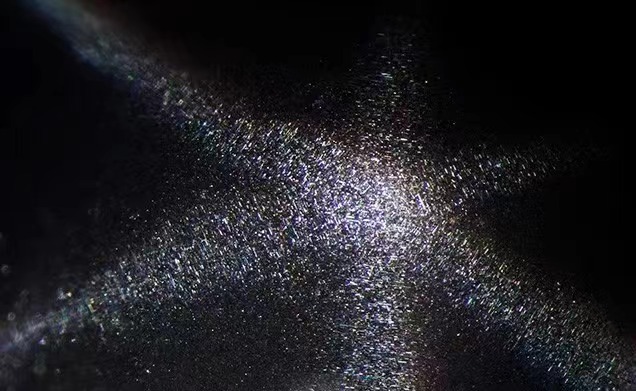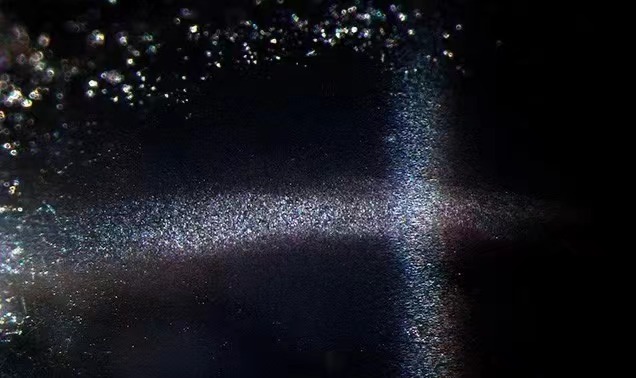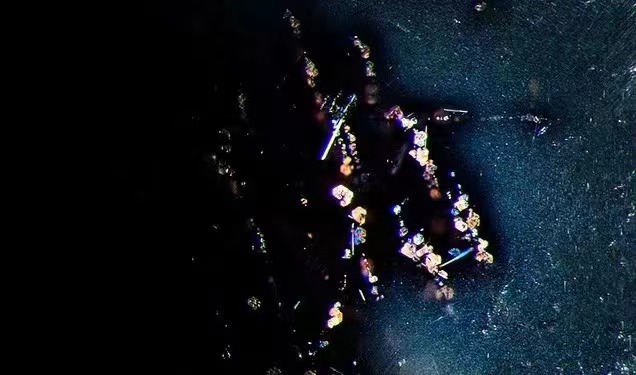Lotus Gem Laboratory regularly receives gems that seem to have a starlight effect. Therefore, when GIA appraisers saw this sample for the first time, they recognised it as one of the common starlight gems that are often identified. However, after careful inspection, GIA's appraisers found that the sample was not a starlight sapphire, but a very rare starlight spinel.

This spinel has been identified as untreated, and the convex surface presents a six-line star.
Microscopic photo: E. Billie Hughes; the sample is provided by Global Spinel Gems.
At first glance, a six-ray star will appear on the convex dome of the sample, which is similar to what is seen in gem-grade corundum.

When viewed from another side, this pine can also present a four-line star.
Microscopic photo: E. Billie Hughes; the sample is provided by Global Spinel Gems.
However, if you look at the side of the spinel, you can still see a four-ray star.
Both stars are composed of many dense short needle-like particles. However, after checking a small quick-polishing area at the bottom of the pinel convex, GIA appraisers found that the interior of the spine actually contained two completely different inclusions.

In the centre of this photo, you can see the large inclusions inside the untreated starspinel; and on the right side of the photo, you can see the finer needle-like inclusions - it is they that form six- and four-line stars.
Microscopic photo: E. Billie Hughes; the sample is provided by Global Spinel Gems.
On the right side of the picture above, we can see the small and dense needle-like and granular inclusions that form two stars. In the centre of the picture, you can see confetti-like inclusions, which are larger and less dense.
Source: GIA
